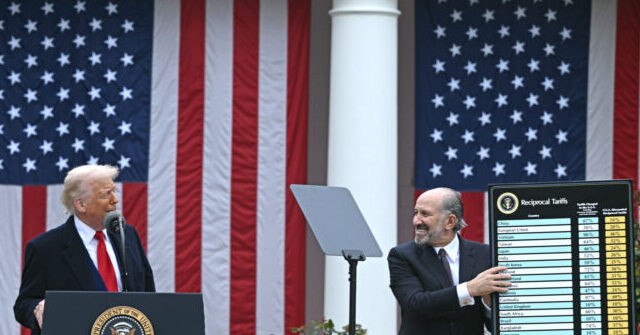The Trump administration on Wednesday released its long-awaited formula for calculating the new reciprocal tariffs unveiled in the Rose Garden, offering a clearer picture of how the United States intends to address persistent trade imbalances.
According to a statement from the Office of the United States Trade Representative (USTR), the tariffs are calculated using a straightforward formula based on each country’s goods trade surplus with the United States. Specifically, the method divides a country’s trade surplus by its total exports to the U.S., then applies a 50 percent discount to the resulting percentage.
For example, China exported $438 billion in goods to the U.S. in 2024 and ran a trade surplus of $295 billion, according to Census Bureau data. That yields a surplus ratio of 67.4 percent, and after halving that figure, the U.S. imposed a 34 percent reciprocal tariff rate.
Countries with smaller imbalances are assessed proportionally lower rates. Nations where trade flows are roughly even or where the U.S. runs a surplus are subject to a flat 10 percent tariff.
The USTR said this method serves as a practical proxy for the wide array of foreign barriers that have contributed to America’s enduring trade deficits. “While individually computing the trade deficit effects of tens of thousands of tariff, regulatory, tax, and other policies in each country is complex, if not impossible, their combined effects can be proxied by computing the tariff level consistent with driving bilateral trade deficits to zero,” the USTR statement said.
The approach reflects a shift in U.S. trade policy toward results-based reciprocity, rather than attempting to match foreign tariffs and regulations one by one. Administration officials noted that foreign trade barriers often include hard-to-measure factors such as regulatory delays, industrial subsidies, currency policies, and value-added taxes that are rebated on exports but applied to imports.
To avoid relying on subjective or incomplete estimates of such policies, the administration opted to use trade balances themselves as a measure of reciprocity. The tariff formula incorporates parameters for price elasticity and tariff pass-through, which the USTR said effectively cancel each other out in most cases—simplifying the final calculation.
Though the tariffs have drawn criticism from some economists and trade groups, the administration maintains that the policy is a necessary step toward restoring balanced trade and protecting American industry from long-standing structural disadvantages.
President Trump announced the new tariffs Wednesday by flipping a placard during a White House event that showed the reciprocal rates for major trading partners, including China, the European Union, Japan, and South Korea.
The administration’s statement did not rule out future adjustments or negotiations with trading partners, but emphasized that the principle of reciprocity would remain central to U.S. trade policy.
Read the full article here


